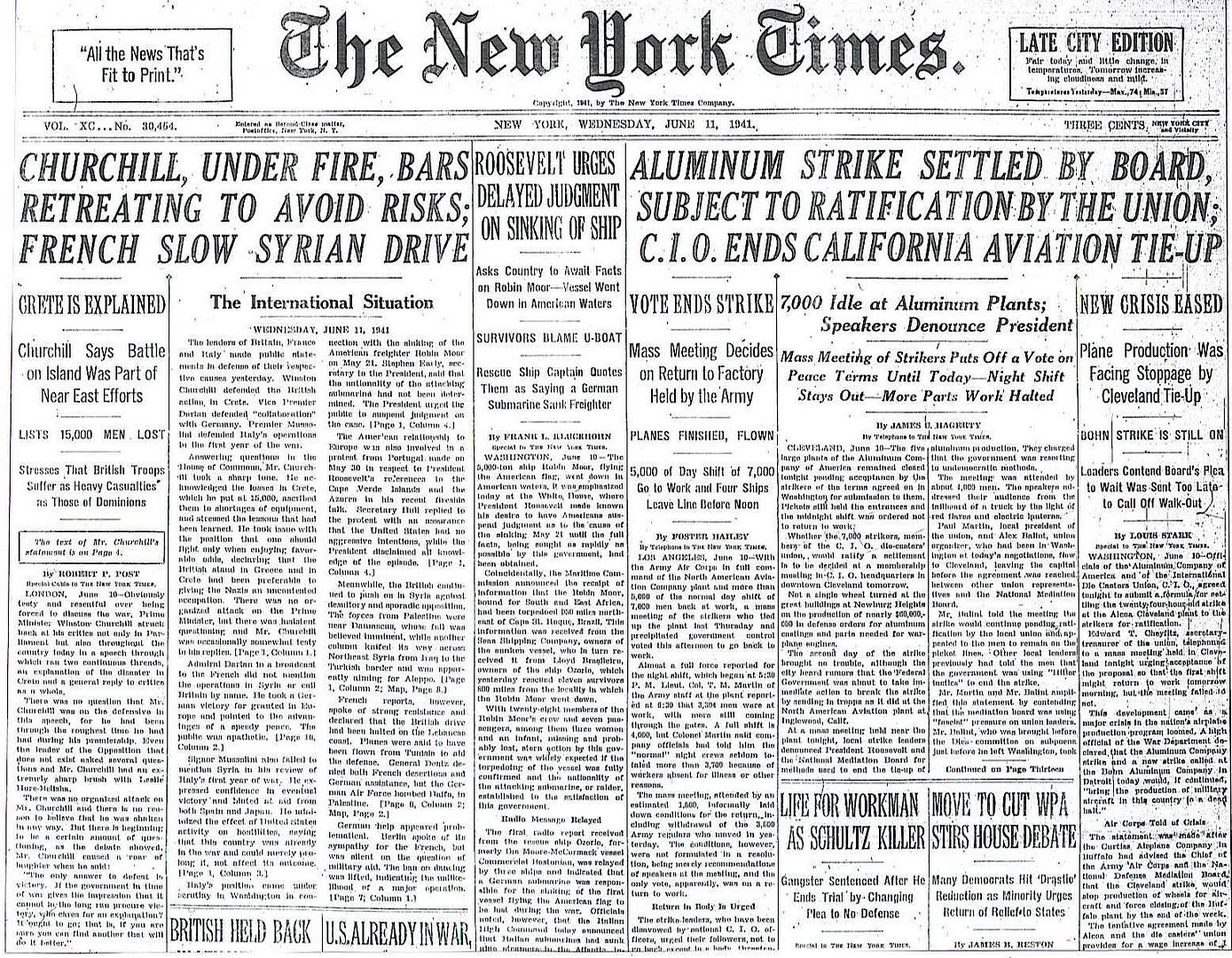
Posted on 06/11/2011 5:22:58 AM PDT by Homer_J_Simpson

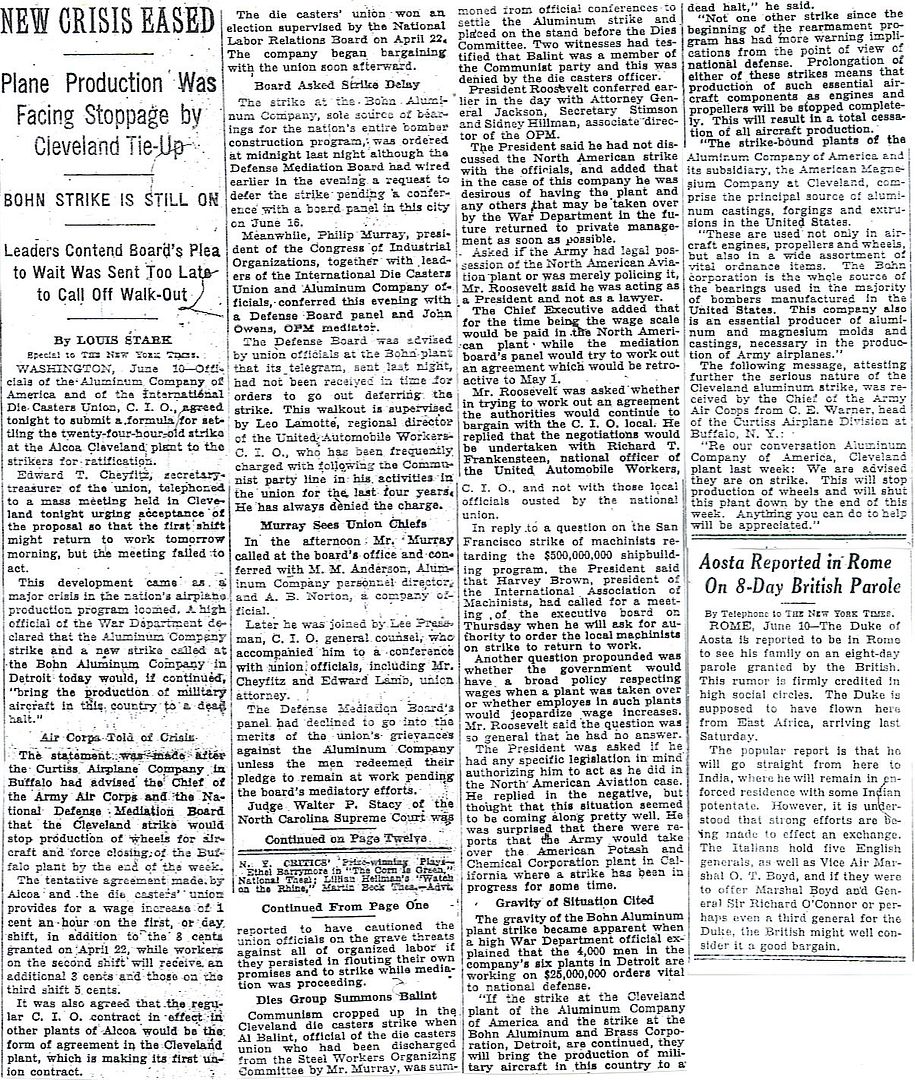
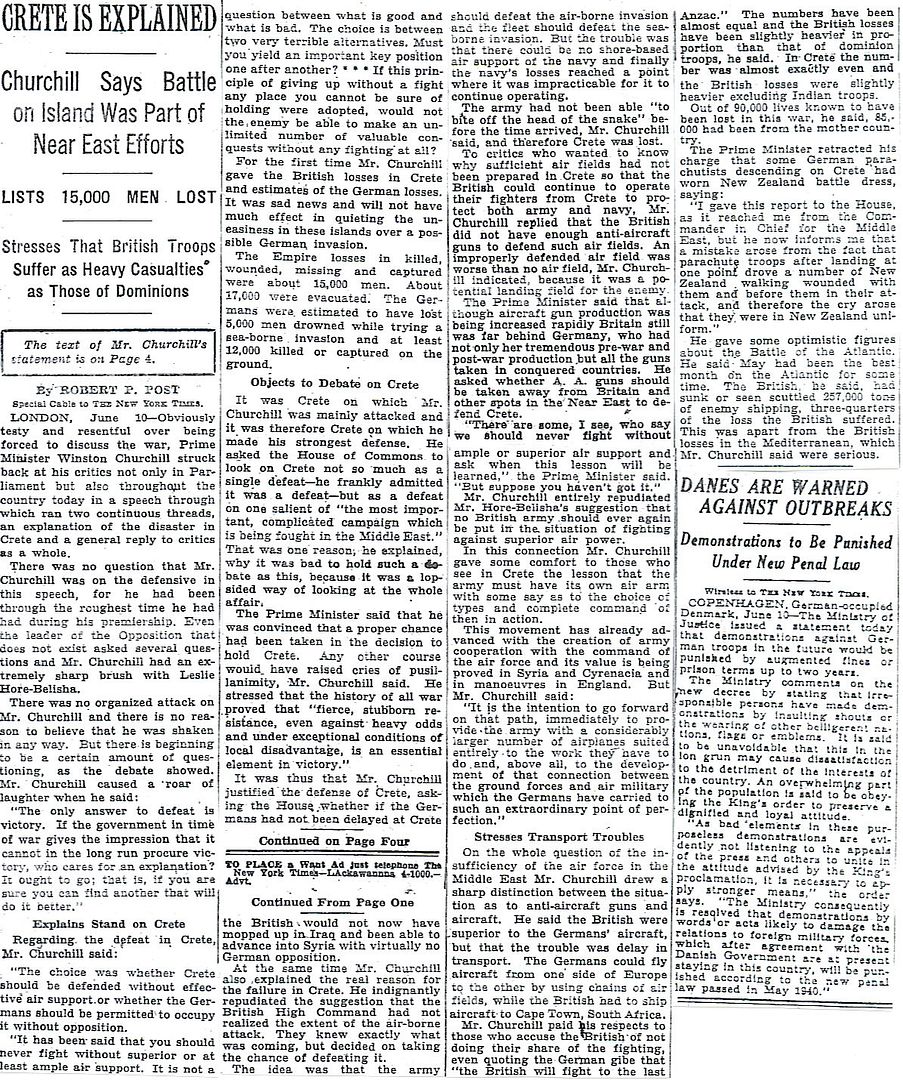
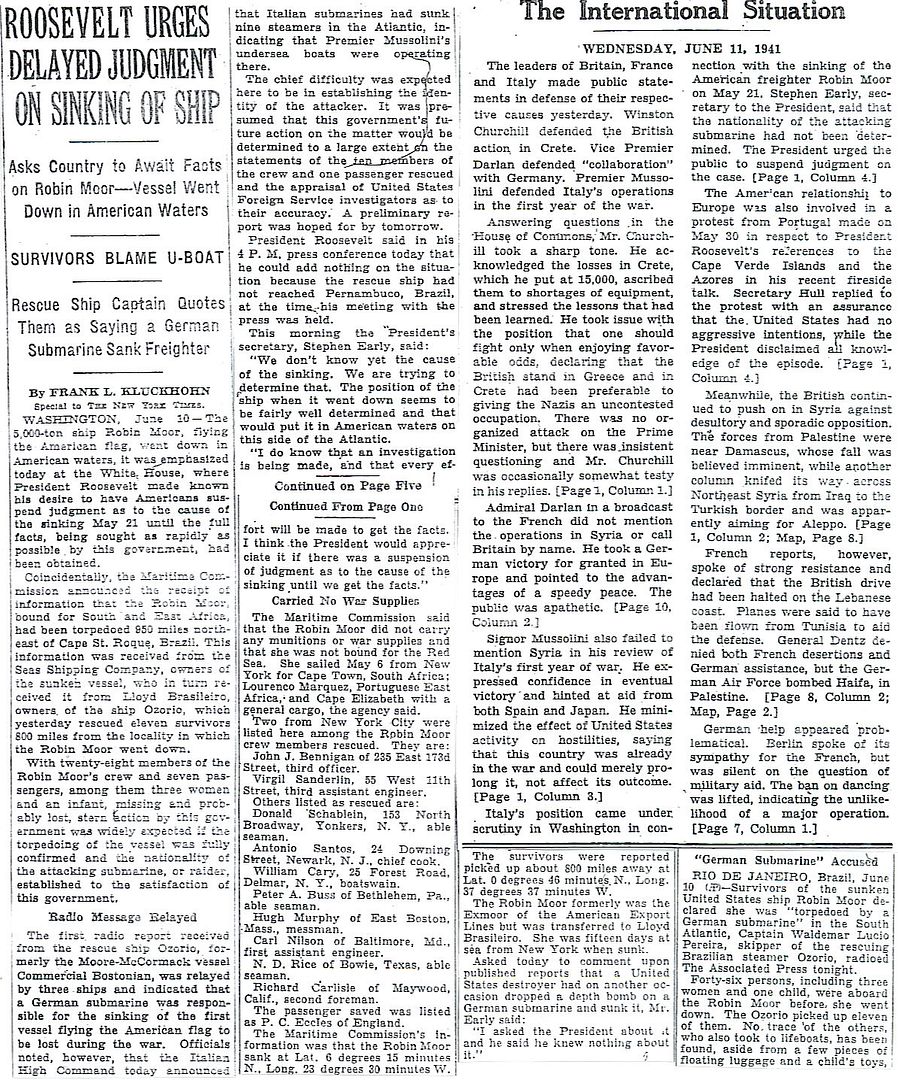
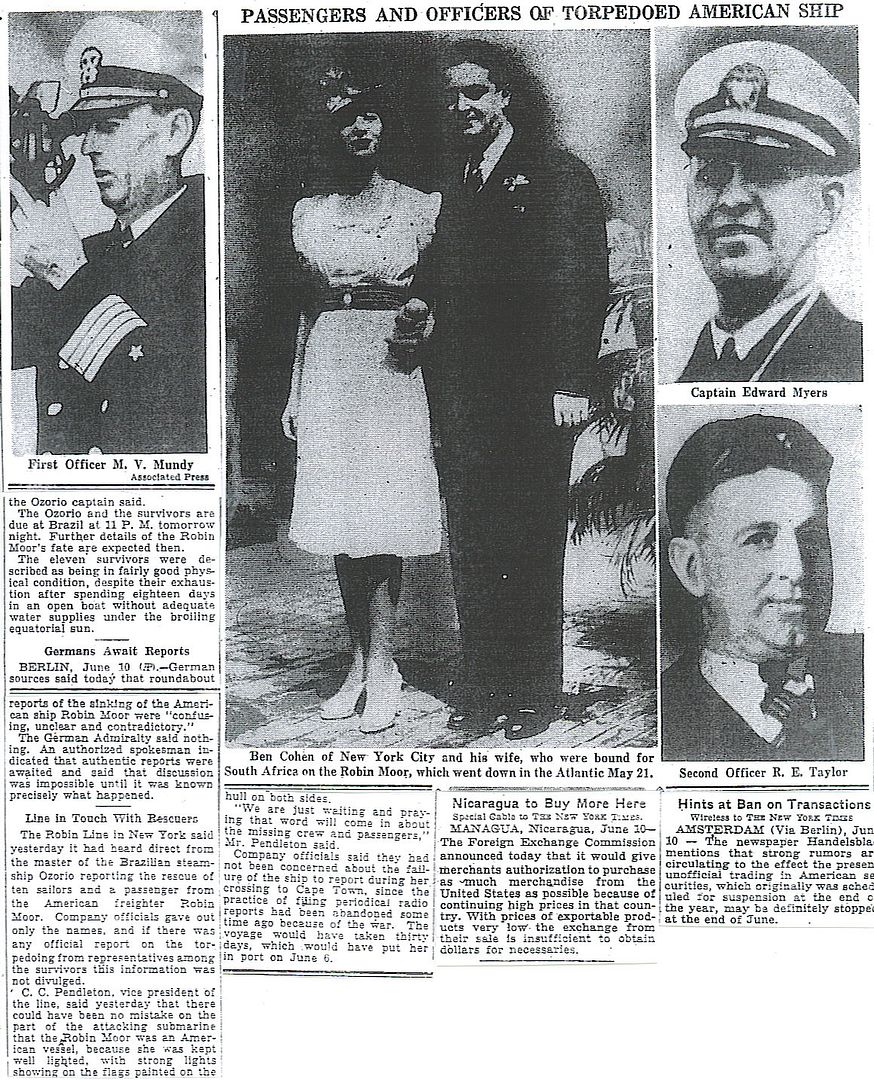
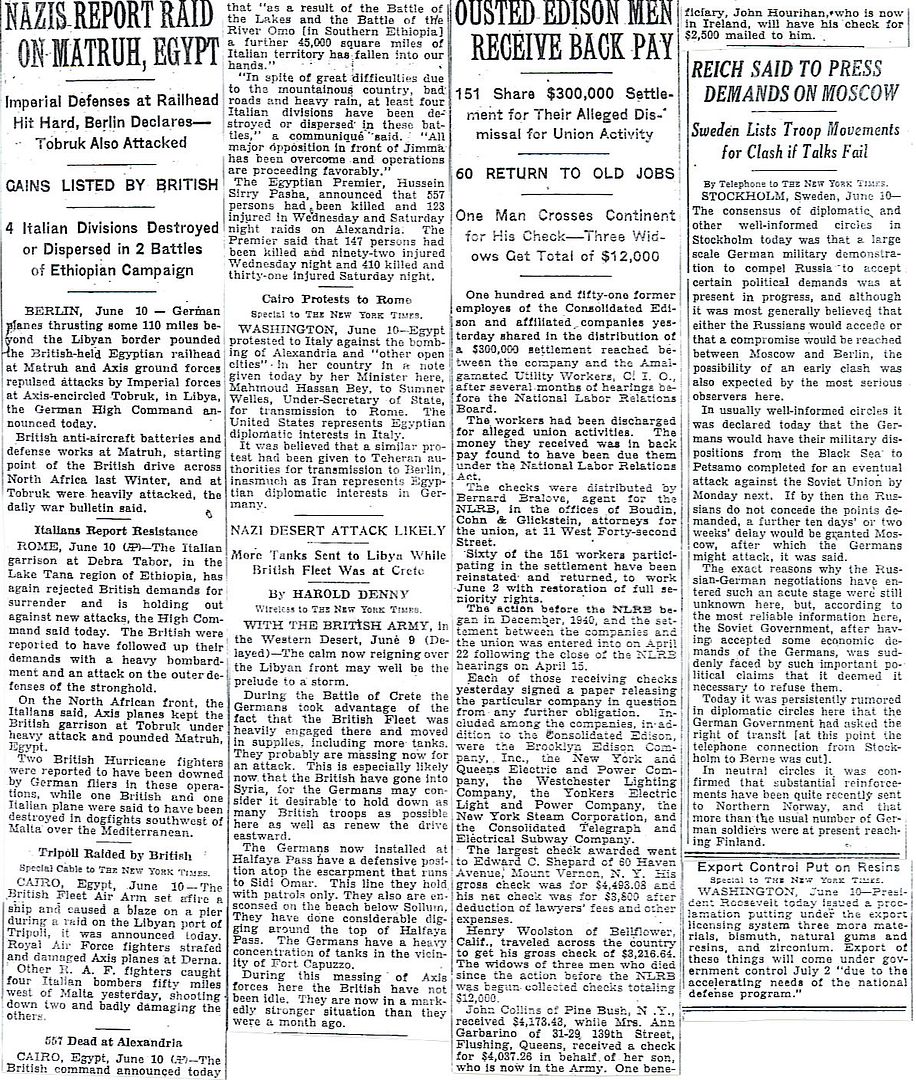
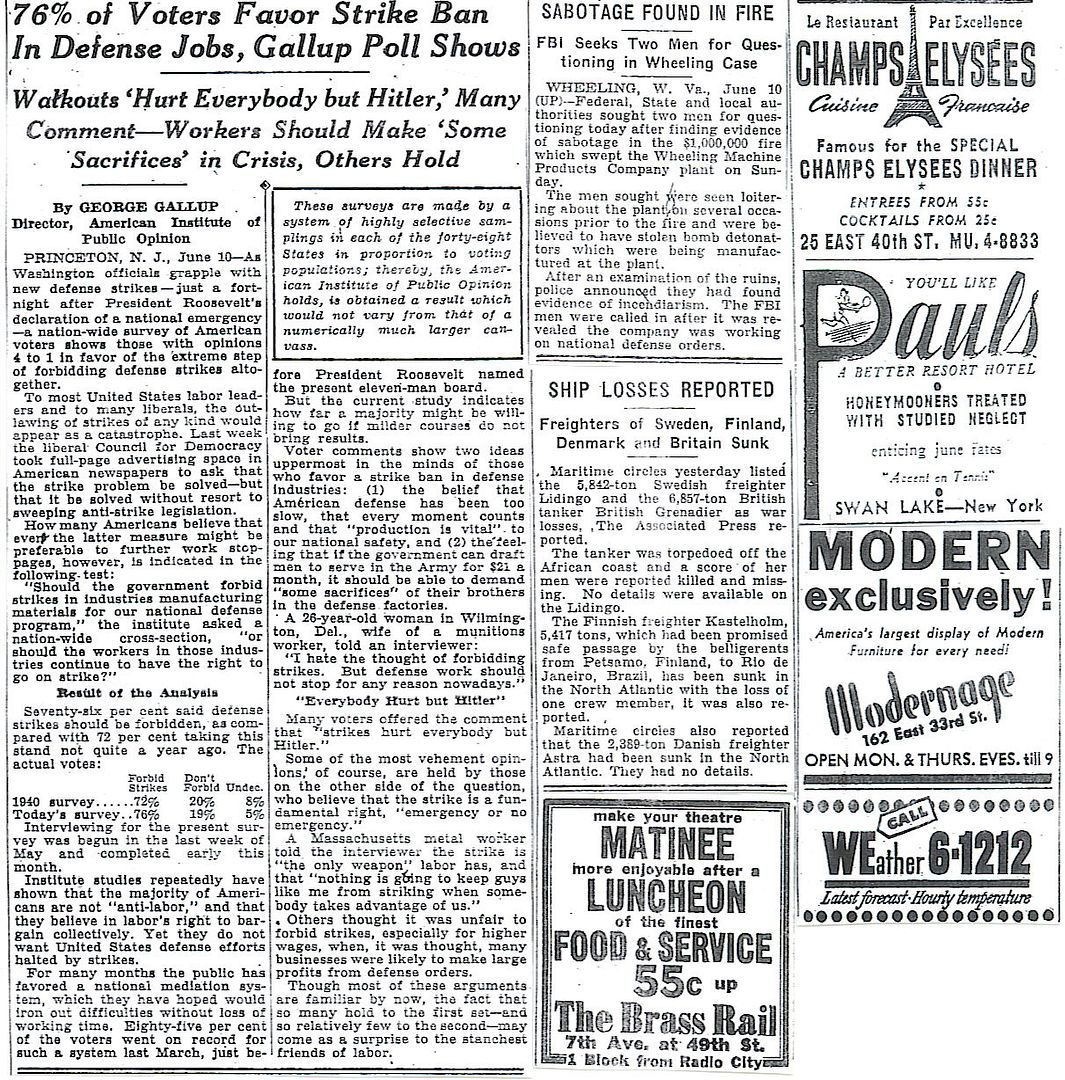
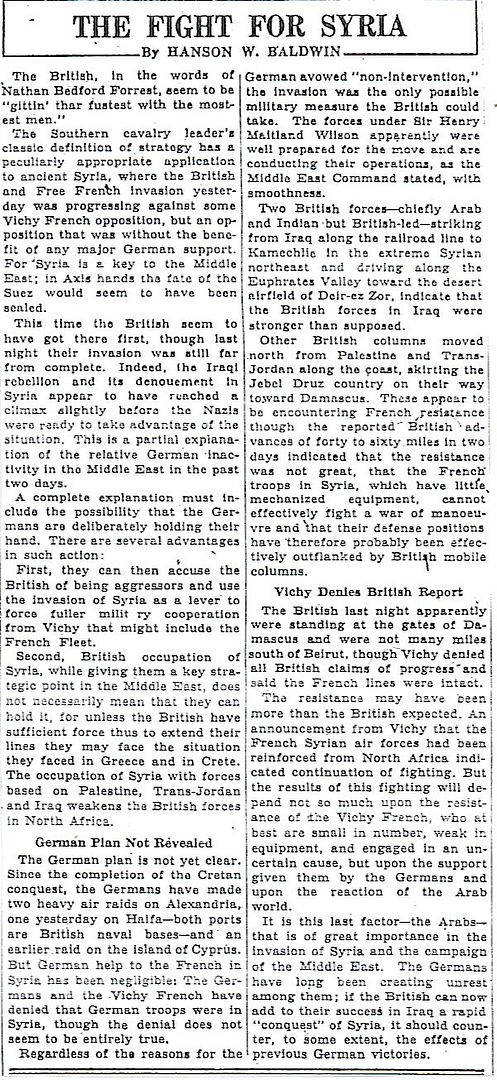
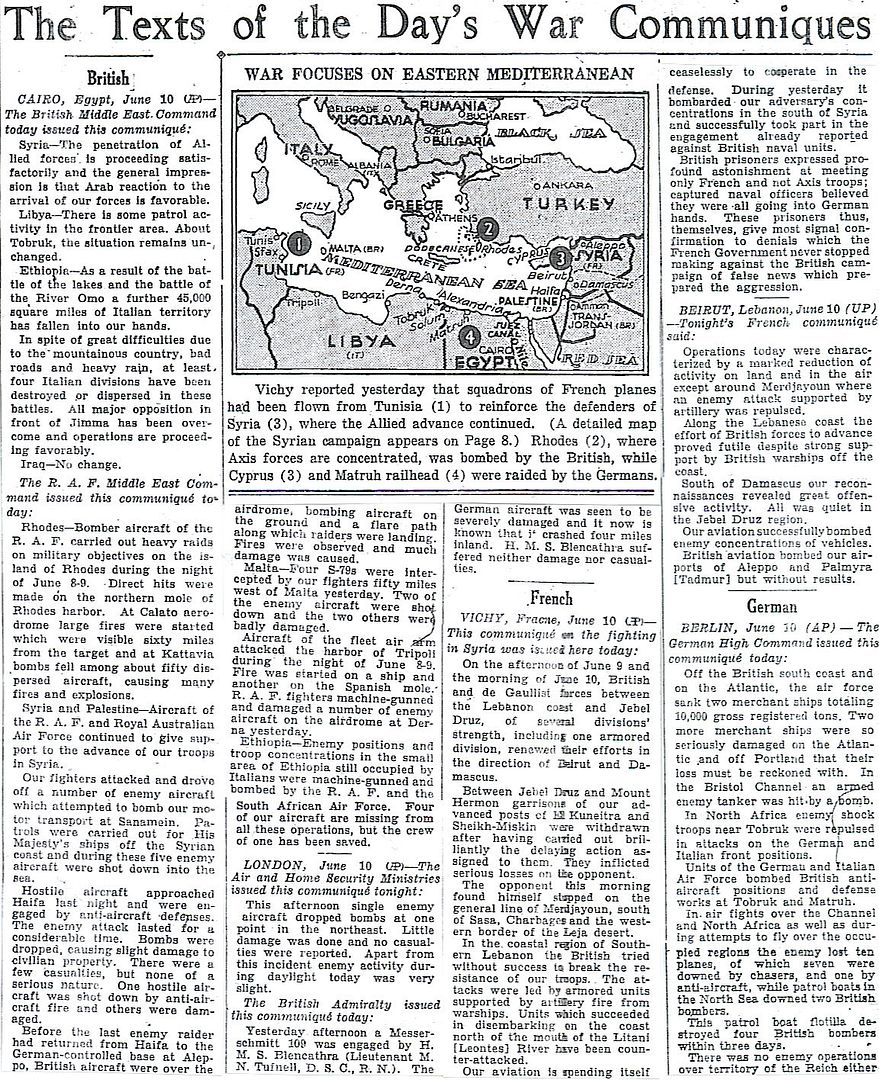
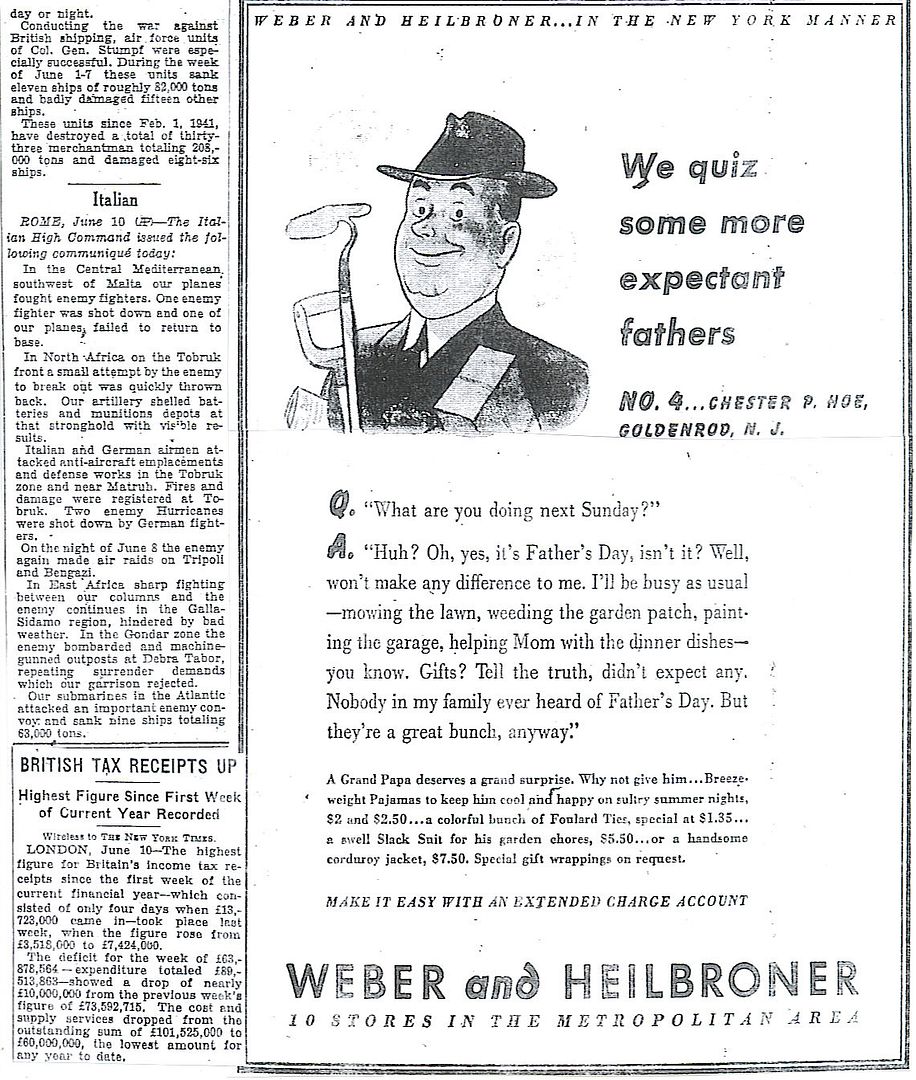
http://www.onwar.com/chrono/1941/jun41/f11jun41.htm
German bombers target England
Wednesday, June 11, 1941 www.onwar.com
Over Britain... Numerous German Luftwaffe raids, on targets in England, are carried out during the night. Leaflets are dropped over rural areas of East Anglia threatening starvation as a consequence of a German victory in the battle of the Atlantic.
Over Germany... British RAF Bomber Command launches the first in a series of 20 consecutive nighttime raids on the Ruhr industrial area, the Rhineland, Hamburg and Bremen.
In the Dutch East Indies... Trade negotiations with Japan are broken off because the Dutch are unwilling to accept the Japanese demands for raw materials.
http://homepage.ntlworld.com/andrew.etherington/month/thismonth/11.htm
June 11th, 1941
GERMANY: The RAF starts a series of raids on the Ruhr and Rhineland industrial areas.
Hitler starts to prepare for the period after Barbarossa, ordering his generals to plan for an assault on Gibraltar and operations in Turkey and Iran.
The Wehrmacht High Command announced:-
German aerial combat formations operating out of newly-won bases in the Mediterranean, have successfully attacked the British fuel tank depots and port installations of Haifa, where they have caused a number of explosions and fires.
U.S.S.R.: Red Army units from the Transbaikal are transferred westwards but are not put on alert.
ERITREA: The port of Assab is captured by Indian troops landed by the Royal Navy yesterday (Operation Chronometer).
JAPAN: At a Liaison conference between army and navy, Naval Chief of Staff Nagano Osami astounded his colleagues be vehemently calling for the Southward Advance. ...He and the navy’s powerful “First Committee” simply were anxious to move before the American navy’s huge “two-ocean” building programme was completed. (201)(Will O’Neil)
U.S.A.: Washington: Roosevelt frees a British division by agreeing to replace the British garrison in Iceland with American troops.
Noticed the headline on Charlie “The Bug” Workman getting life for whacking Dutch Schultz in Jersey. Probably Murder, Inc.’s best hitman [with apologies to Pittsburgh Phil Strauss, Abe Reles, and Happy Maione].
While the Japanese Army wanted to invade the U.S.S.R, it was always going to be the Southern Option. The war in the Pacific was about Indonesia - and the oil the Japanese Navy had to have, once FDR embargoed them.
http://en.wikipedia.org/wiki/Dutch_Schultz
http://crime.about.com/od/gangsters/ig/Mafia-Mug-Shots/workman_charles.htm
Reich Said To Press Demands On Moscow
What a truly remarkable article.
The outlines of the coming Nazi attack on Russia is right there (for anyone who was willing to see it)for all to read. Even the part where the Germans cut the Swedish telephone connection just as "right of passage" was being transmitted. For months there had been many diplomatic rumors about the Germans seeking passage through the Ukraine to get at Britain's "back door". It was certainly believed by a large portion of the German troops (including my uncle who was stationed in the Wehrmacht near Lublin) who had been massing along the German-Soviet demarcation line in Poland.
I guess in those days correspondents actually went out and questioned everyone concerned in order to get a valid story-unlike today where it seems that the purpose of being a newsman is largely concerned with blackening your political opponents reputation. I'm still shocked at the information contained in this small article and can imagine what the German reaction was.
MYTH II: The Russians just threw billions of soldiers without rifles in front of German machine guns.
REALITY: The vast majority of German soldiers were killed, taken POW or otherwise incapacitated on the Eastern front. The Soviet to Axis loss ratio was 1.3:1 and the USSR outproduced Germany in every weapons system throughout the war.
According to meticulous post-Soviet archival work (G. I. Krivosheev in Soviet Casualties and Combat Losses), the total number of men (and in the Soviet case, about 1mn women) who passed through the armed forces of the USSR was 34,476,700 and through Germany's was 21,107,000. Of these, the "irrevocable losses" (the number of soldiers who were killed in military action, went MIA, became POWs and died of non-combat causes) was 11,285,057 for the USSR, 6,231,700 for Germany, 6,923,700 for Germany and its occupied territories, and 8,649,500 for all the Axis forces on the Eastern Front. Thus, the total ratio of Soviet to Nazi military losses was 1.3:1.
Hardly the stuff of "Asiatic hordes" of Nazi and Russophobic imagination (that said, also contrary to popular opinion, Mongol armies were almost always a lot smaller than those of their enemies and they achieved victory through superior mobility and coordination, not numbers). The problem is that during the Cold War, the historiography in the West was dominated by the memoirs of Tippelskirch, who wrote in the 1950's citing constant Soviet/German forces ratios of 7:1 and losses ratio of 10:1. This has been carried over into the 1990's (as with popular "historians" like Anthony Beevor), although it should be noted that more professional folks like Richard Overy are aware of the new research. Note also that cumulatively 28% and 57% of all Soviet losses were incurred in 1941 and 1942 (Krivosheev) respectively - the period when the Soviet army was still relatively disorganized and immobile, whereas for the Germans the balance was roughly the opposite with losses concentrated in 1944-45.
The idea that there were two soldiers for every rifle in the Red Army, as portrayed in the ahistorical propaganda film Enemy at the Gates, is a complete figment of the Russophobic Western imagination. From 1939 to 1945, the USSR outproduced Germany in aircraft (by a factor of 1.3), tanks (1.7), machine guns (2.2), artillery (3.2) and mortars (5.5), so in fact if anything the Red Army was better equipped than the Wehrmacht (sources - Richard Overy, Why the Allies Won; Chris Chant, Small Arms)-END QUOTE.
The part I have the most trouble with is the loss/force ratios this author describes between the Soviets and Germans. Any thoughts.........?

I don’t buy it. The Germans lost something like 3 to 3.5 million soldiers on ALL fronts in WW II. The Russians lost something like 7 million troops. IF all the Germnas had been killed on the Eastern front [and they weren’t], that would still be a 2:1 loss rate for the Russians. Credible estimates put the ratio of German to Russian dead as somewhere between 1:5 and 1:6.
http://worldwar2daybyday.blogspot.com/2011/06/day-650-june-11-1941.html
Day 650 June 11, 1941
Indian 3rd Battalion 15th Punjab Regiment captures Assab, Eritrea, clearing the Red Sea and Gulf of Aden coastlines of Italian forces. This will allow President Roosevelt to declare the area a non-combat zone and permit US ships to proceed through the Suez Canal, providing much relief to British forces in the Mediterranean.
Operation Sommerreise. German heavy cruiser Lutzow (repaired after damage from Norwegian shellfire and a British torpedo attack during the invasion of Norway in April 1940) departs Kiel for Norway, escorted by light cruisers Emden and Leipzig plus 6 destroyers.
At 8.51 PM 150 miles West of Iceland, U-79 sinks Norwegian SS Havtor (6 killed). 14 survivors, including 9 wounded, abandon ship in a lifeboat and are picked up by a fishing boat. Able seaman Ole Normann Lorentzen has now survived 3 sinkings in the North Atlantic in 9 months since September 15 1940.
15 miles South of Greek island of Lesbos, British submarine HMS Torbay rams and sinks a Greek fishing boat carrying German troops and supplies. British submarine HMS Taku sinks German steamer Tilly LM Russ in Benghazi Harbour.
Overnight, RAF Bomber Command begins 20 nights of raids on the Germany industrial heartland (Ruhr area and the Rhineland) and the port towns of Hamburg and Bremen.
Disclaimer: Opinions posted on Free Republic are those of the individual posters and do not necessarily represent the opinion of Free Republic or its management. All materials posted herein are protected by copyright law and the exemption for fair use of copyrighted works.